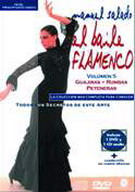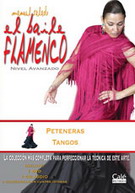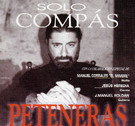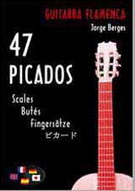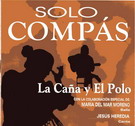People interested in this item also bought:
Polo, The
Polo is the name of a flamenco palo or musical form. There is only one known song in this palo, which is extremely similar to another palo called caña, and its guitar accompaniment, like the caña, shares its rhythm and motifs with soleá. Both the caña and polo share the same musical mode. In fact, the polo has usually been considered as a derivation of the caña. To complete the singing of the polo, singers usually sing a stanza in the palo of soleá, generally a the style called soleá apolá.
Although nowadays, only one song is known for the polo, known as polo natural, past writers also mention another polo, called polo de Tobalo, which has probably been lost.
As to the metre and musical mode, they are the same as for the soleá, that is 12-beat metre (or alternating 3/4 and 6/8).
The guitar accompaniment and falsetas are also inspired by the soleá, although some special arpeggios are included after the second line of each section ("con catorce" and "y viva el polo") and during the singing of the melismas. It is always accompanied in the guitar chord position of E for the tonic. Musicologist Hipólito Rossy stated that the song was in [major mode] and 3-beat metre (Rossy [1966] 1998), but it is obvious that he was not very familiar with this palo, as all recordings show the typical soleá rhythm and Phrygian mode. He might have been influenced by the recording of singer Jacinto Almadén, in which guitarist Perico el del Lunar certainly uses some chords insinuating the major mode.
Both the caña and the polo seem to have enjoyed great success and were considered the finest type of flamenco song at the beginning of the 19th century. Serafín Estébanez Calderón, in his book from 1847 Escenas andaluzas (Andalusian Scenes), mentioned famous singer El Planeta (the protagonist in one of the scenes), as "King of both polos". He also assured that the polo was difficult to sing and that it was derived from the caña and mentions the polo de Tobalo. The polo is widely mentioned in the literature of the 19th century. Most important singers at the time included it in their repertoire, up to the times of Antonio Chacón, who is reported to be one of the latest great performers of this song.
Although historic sources mention two or more polos, only one variety is known for sure to have survived to our days: the polo natural. Singer Pepe de la Matrona recorded a version of the polo Tobalo at the end of the 1969s, but the authenticity of this recorded version has been put in doubt by several critics on the grounds that he could never explain who he had heard it from (Álvarez Caballero 1998).
The only old recording with the title of polo, prior to its rediscovery in the 1950s, was made by La Rubia and it resembles the caña even more than the usual version of the polo natural. In 1960, at the time of reappraisal of traditional cante, the polo natural was recorded by Jacinto Almadén (also known as "El Niño de Almadén"), in the Antología del cante flamenco compiled by guitarist Perico el del Lunar and flamencologist Tomás Andrade de Silva.

